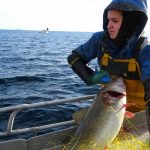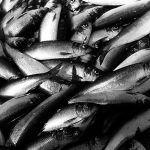There was rumour that DNR is encouraging by selectively spawning younger fish. But DNR fisheries biologist Scott Hansen of Sturgeon Bay said that it was not true at all. He told that the age composition of chinook salmon has changed over the last couple decades, and the initial and primary culprit was likely bacterial kidney disease. BKD may have killed a disproportionate number of the older year classes of fish; anecdotally, larger fish were the ones most often seen on the beaches.
As a result an apparent dilution of fish with a later maturation schedule could certainly have impacted the genetic composition of chinooks lakewide.” Hansen said another more recent possibility that biologists are trying to address is the issue of spawning fish throughout the run. Hansen said biologists aren’t sure if this could impact maturation schedules, but it’s a possibility.
According to DNR it has put together a working group to look at the issue and — with the help of the Conservation Genetics Lab at the University of Wisconsin-Stevens Point — are examining what they can to ensure they’re getting the proper genetic diversity for chinooks at Strawberry Creek.
Finally, smaller salmon may also be a sign of a reduced forage base on Lake Michigan. Even though fall acoustic and trawl surveys the past two years have found improving numbers of alewives and smelt, populations are still near historic lows.








